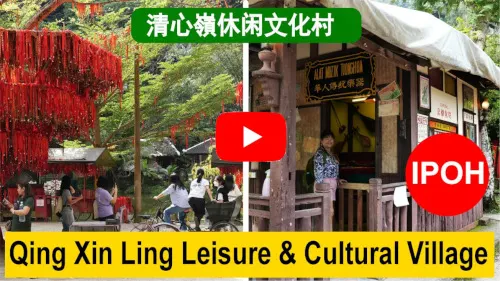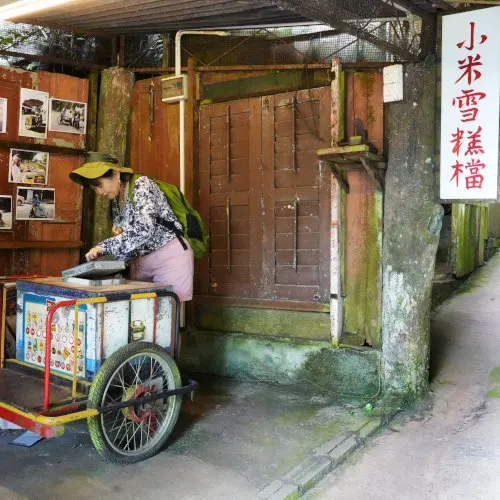
When I arrived in Ipoh, Perak, I knew I had to visit Qing Xin Ling Leisure & Cultural Village. It's quickly become the most popular tourist attraction in Ipoh, and I could see why as soon as I stepped inside.
The name itself, Qing Xin Ling, meaning "Serene Hill" in Chinese, perfectly captures the tranquil atmosphere of this enchanting place.

This attraction is situated at Gunung Rapat within a residential area. The village is built between the limestone hills and the fish pond. Despite being managed by the Qing Xing Ling Buddhist Association, the park is geared towards leisure and tourism, with minimum religious elements on display. Qing Xin Ling Leisure & Cultural Village was opened in 2014.
What sets Qing Xin Ling apart from other tourist destinations is its unique ambiance, which travels back to the 60s and 70s of the last century. The vintage furniture and artifacts on display evoke a sense of nostalgia for the lifestyle and culture of Ipoh during that era. As I wandered through the park, I felt as though I had stepped back in time and was exploring the old town of Ipoh from fifty years ago.
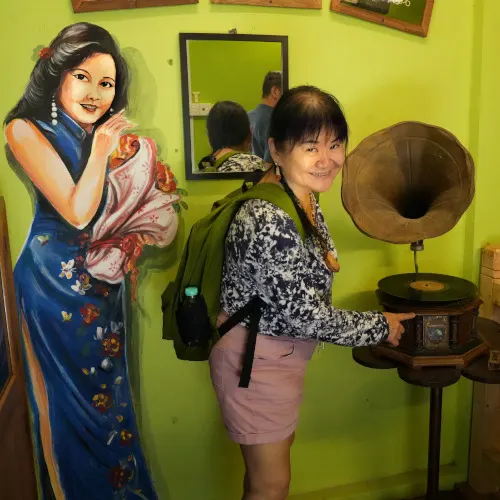
Watch the video we shot at Qing Xin Ling. It is at the end of this article. 👇👇
Best time to visit the cultural village
We arrived at Qing Xin Ling Leisure and Cultural Village early in the morning to avoid the crowds of tourists during the holiday season. A large empty parking area was in front of the ticket counter. By the time we left, it was overflowing with visitors. During public holidays, this place is packed with people.
The ticket price is RM12 per person for the local. Once we had purchased our tickets, we wasted no time and entered the park.
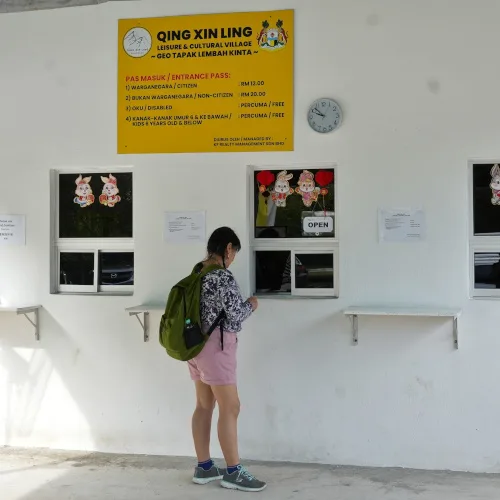
The park is centered around a peaceful lake, with rows of chalet-style small buildings amidst the mountain backdrop, which house various displays and collectibles.
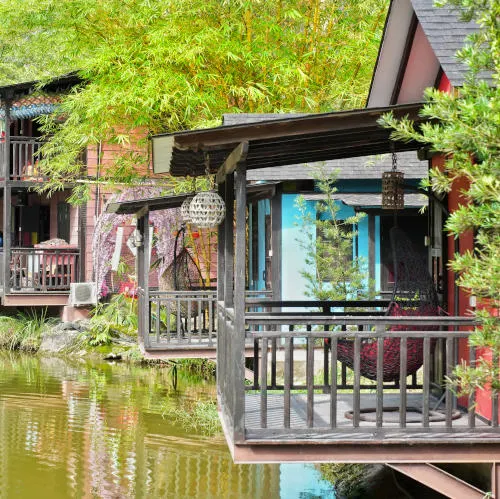
We were amazed by the attention to detail in each exhibit, which included old houses from the 1960s, street vendors selling food and drinks, antique collections, and even a wishing tree.
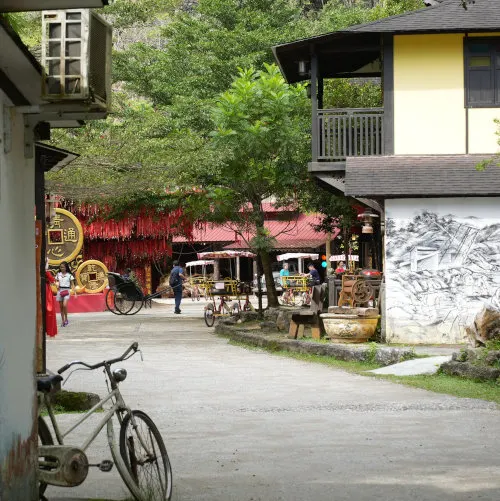
The vintage houses around the pond
The vintage house near the entrance proudly displays traditional Chinese instruments.

Next to it is a traditional Chinese tea house.

Opposite the tea house is a kampong-style Malay house.

If you're looking for a fun way to explore Qing Xin Ling, take advantage of the free traditional Chinese rickshaws, tandem bikes, and trishaw rides available for visitors.

A huge, aged banyan tree is in the park's center, which holds the symbolic significance of a "Wishing Tree." You can inscribe your wishes onto a red ribbon, which you can obtain near the tree. The staff will secure the ribbon to the tree for you.
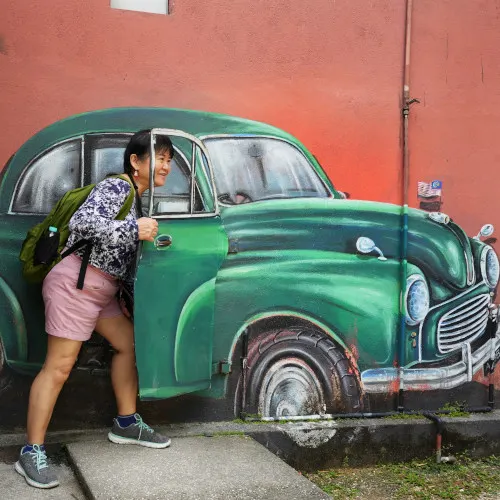


There's a beautiful double-story house designed to look just like a typical Chinese household from the ’60s. It features a sitting room, a wooden balcony, and a kitchen, all furnished with authentic furniture from that period.

One of the things that caught my eye was the collection of vinyl records on the wall. These records featured famous singers from the 70s, and it was amazing to see how well-preserved they were.

It was clear that the people who manage the park have a deep appreciation for the culture and history of Ipoh and that they've gone to great lengths to recreate the ambiance of that era.
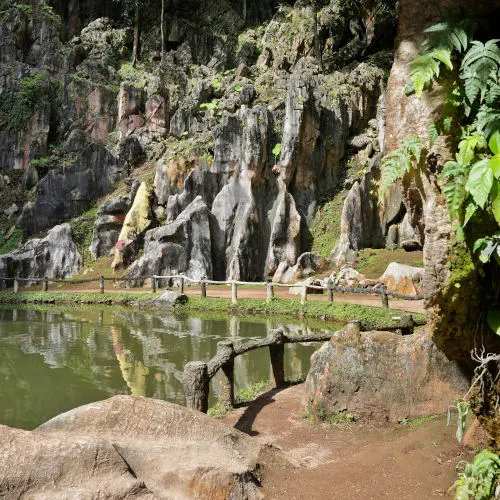
The fish pond, with the limestone hills as a breathtaking backdrop, is ideal for capturing stunning photographs.
Visit the Gallery Warisan is like being transported back in time
We arrived at the Gallery Warisan next to the banyan tree. The recreated scenes were so realistic that it was easy to imagine life in Ipoh fifty years ago. We saw old-fashioned furniture and decorations, vintage clothing and accessories.
As I walked through the gallery, I was struck by how many displays resonated with me. For instance, I was thrilled to see an old organ that reminded me of my old house.
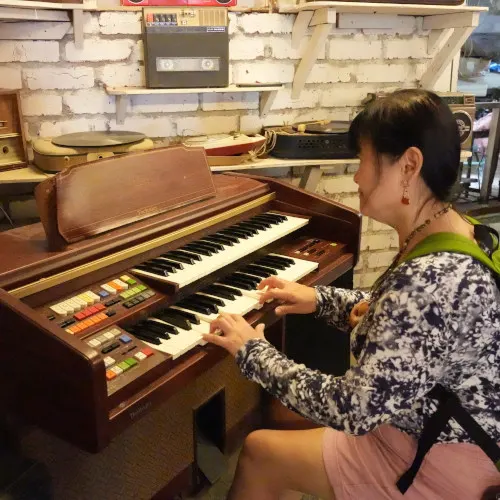
Another item that caught my eye was a jukebox still in perfect working order. As I listened to the music, I felt transported back in time, and I imagined what it would have been like to dance to these tunes with my old schoolmates.
There was also an old radio on display that looked just like the one my father had bought when I was young. Seeing it again brought back so many memories and made me feel nostalgic for a time that has long since passed. Finally, I came across an old sewing machine, just like the one we had in my wife's old house in Kampar.

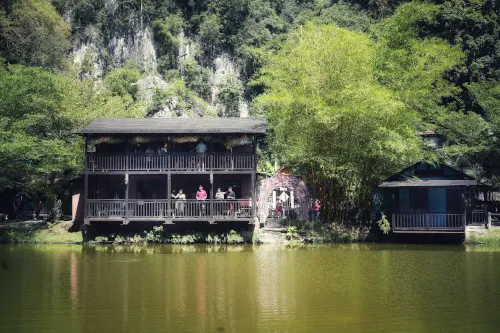
We walked around the pond and reached the place depicting the life and teaching of Confucious.
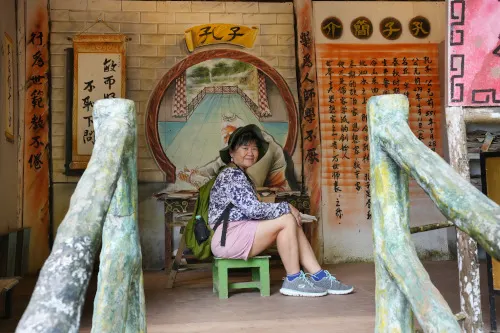
Soon we passed a food stall selling traditional biscuits, then the displays of antique collections.
Take a trip down Memory lane
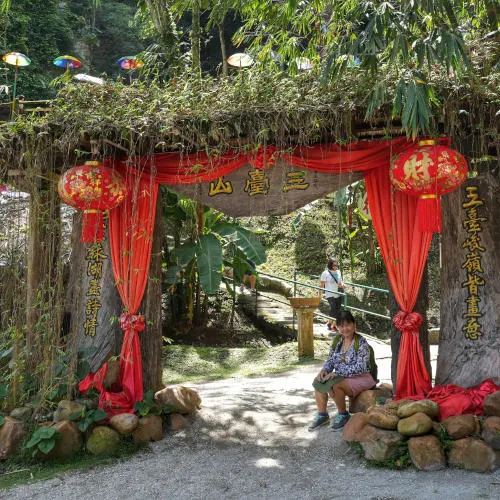
Once we had finished exploring the antique houses and taking in the scenic view of the limestone hill, we walked up Memory Lane, which runs along the limestone cliffs.
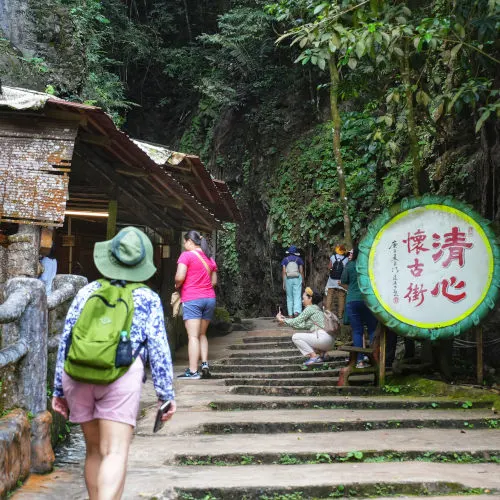
The narrow paved lane leads uphill, lined with replicas of the vintage stores from Ipoh's past. Walking along this street felt like immediately transported back to the old Ipoh town I remember from my youth.
As we strolled, we saw various shops, including a wonton noodles store, a barber shop, a dessert store, a watch shop, an old-fashioned tailor store, and many more.

Each shop was meticulously recreated to look just as it did in the 60s and 70s, with vintage signage and period-appropriate decorations.

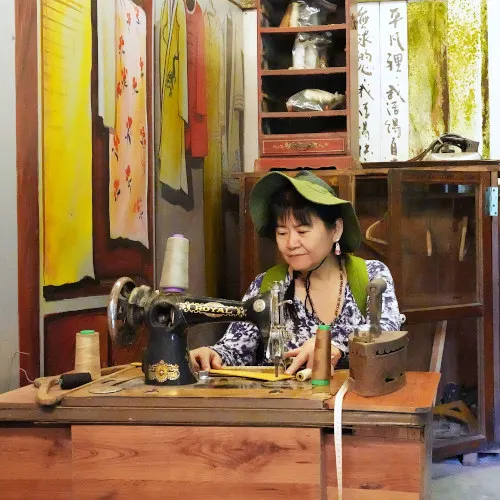


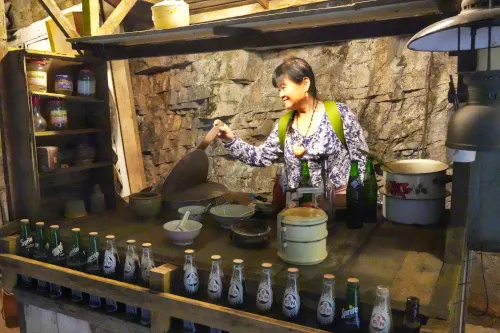
Qing Xing Ling is a place worth visiting. Kek Lok Tong and Sam Poh Tong Temple are other notable Ipoh cave temples near this cultural village.
- Address: 22A, Persiaran Pinggir Rapat 5a, Taman Saikat, 31350 Ipoh, Perak
- Opening hours: 9:30 am–5 pm (close on Sunday)
- Entrance Fee: RM12/person RM20/person for foreigners.
- Facebook: You can check out the Facebook page of this cultural village for more information.
Watch the video we shot about food in Qing Xin Ling. 👇👇
If you have read this blog post this far, don't miss out on the video shot in Qing Xin Ling. Click the image below to watch on YouTube (shot in high definition!). If you like culture, read our story at Mari Mari Cultural Village in Sabah.
